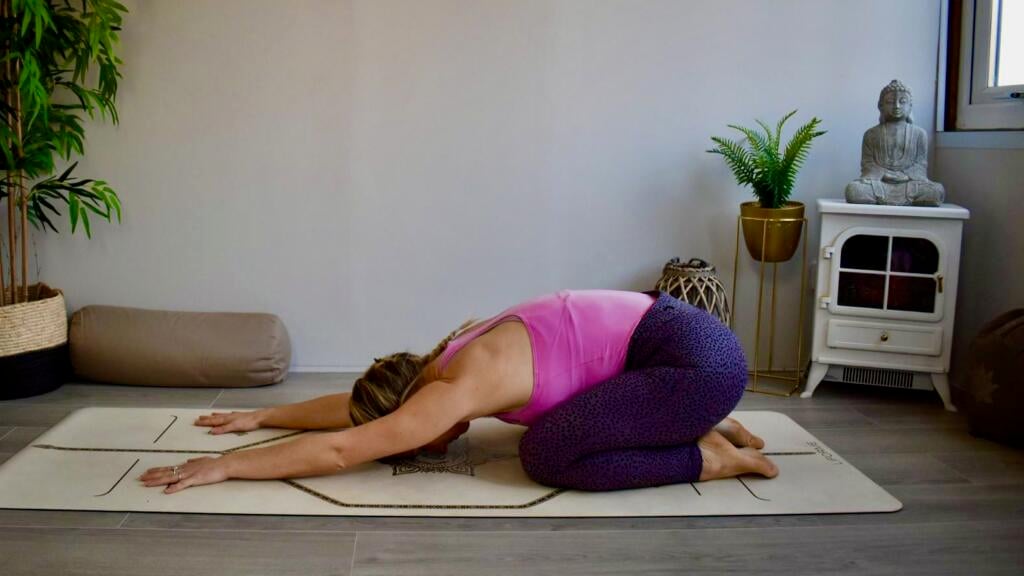
The best beginner yoga poses
Phillipa Cherryson
They’re both brilliant forms of exercise in their own way. Here’s how to tell whether Pilates or yoga is best for you.
If you haven’t tried yoga or Pilates, it’s sometimes hard to tell the difference between the two. Both are about breathing, flexibility and mindfulness, and social media is full of photos of influencers stretching their bodies into strange shapes, in both forms of exercise.
So, what is the difference between yoga and Pilates, and is one better than the other? We’ve teamed up with Jade Gooding, who teaches both, to explain the key similarities and differences – so you can decide which one is the best for you.
If you haven’t tried yoga or Pilates, it’s sometimes hard to tell the difference between the two. Both are about breathing, flexibility and mindfulness, and social media is full of photos of influencers stretching their bodies into strange shapes, in both forms of exercise.
So, what is the difference between yoga and Pilates, and is one better than the other? We’ve teamed up with Jade Gooding, who teaches both, to explain the key similarities and differences – so you can decide which one is the best for you.
 Credit: Shutterstock / Jacob Lund
Credit: Shutterstock / Jacob LundGooding says: “Both yoga and Pilates are low impact exercises that can be performed with body weight only but, for me, they are completely different workouts.
“Both practices can reduce the risk of injuries, improve posture and increase overall wellbeing. But Pilates has more of a focus on core strength and alignment, whereas yoga will take you on more of an inward journey of awareness.”
Yoga originated in India more than 5,000 years ago. It’s an ancient spiritual practice that connects the body with the mind and spirit. It involves holding different body positions and stretching your muscles while focusing on your breathing – it aims to build strength and awareness, physically and mentally. There are different forms of yoga and to find out more, read our essential guide to yoga for beginners.
Pilates is a baby compared to yoga as it is just 100 years old. It is a low impact form of exercise that focuses on body weight resistance. The stretches and movements are similar to yoga but are controlled by your core muscles.
There are six key principles of Pilates – breathing, concentration, centring, control, flow and precision. It places an emphasis on carrying out well defined, often small movements correctly and in balance.
 Credit: Shutterstock / BearFotos
Credit: Shutterstock / BearFotosGooding says that despite the differences, the two types of exercise do have quite a few things in common.
There are three fundamental differences between the two practices.
 Credit: Shutterstock / Nirat.pix
Credit: Shutterstock / Nirat.pix“Absolutely, yes!” says Gooding. “Incorporating both forms of practice into your lifestyle can be hugely beneficial.
“Improving your core strength during a Pilates class will help with your balance during a yoga practice.
“Increasing your flexibility and mobility during a yoga class will enable you to develop better posture during your Pilates.”
Both require very little equipment. They don’t need any special clothing. A T-shirt and a pair of leggings are perfect for women (read our guide to the best gym leggings we’ve tested), while for men, a T-shirt and jogging bottoms work well.
For yoga it’s worth investing in a good yoga mat. For Pilates, mats are also important but choose a thicker one, at least 10mm (a third of an inch) thick is advisable. As you progress, you may start to use props, which can introduce an extra challenge to your workout or else help you in postures and stretches. Props can include blocks, straps, weights, Pilates balls or Pilates rings.
Both are low impact exercises that can help improve your flexibility and strength, and can help with stress and tension.
In the end it comes down to your personal choice. If you are interested in spirituality, then yoga would be for you. If you have an injury, then Pilates may be a better choice, as it is used by a lot of physiotherapists for rehabilitation.
All things considered, there is something for everyone in both practices, so it is best to try them both to decide which you prefer – and if you can’t decide, then why not do both?

Written by Phillipa Cherryson she/her
Published: Updated:
Phillipa Cherryson is a senior digital editor for Saga Exceptional. Phillipa has been a journalist for 30 years, writing for local and national newspapers, UK magazines and reporting onscreen for ITV. In her spare time she loves the outdoors and is a trainee mountain leader and Ordnance Survey Champion.

Phillipa Cherryson

Phillipa Cherryson

Phillipa Cherryson

Adele Cherreson Cole